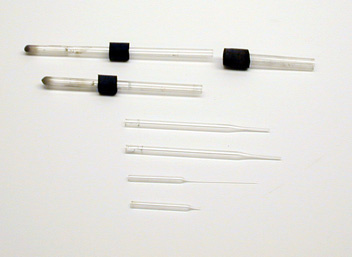Breadcrumb
3D30.75 - Knipp Tube

Code Number: 3D30.75
Demo Title: Knipp Tube
Condition: Excellent
Principle: Resonance in Pipes
Area of Study: Oscillations & Acoustics
Equipment:
Bunsen Burner with Flame Screen, Matches of Grill Lighter, Knipp tubes.
Procedure:
Heat the large end of the sliding glass tube assembly ( Knipp tube ). Once heated you should be able to remove it from the flame and by adjusting the position of the tubes it should "sing".